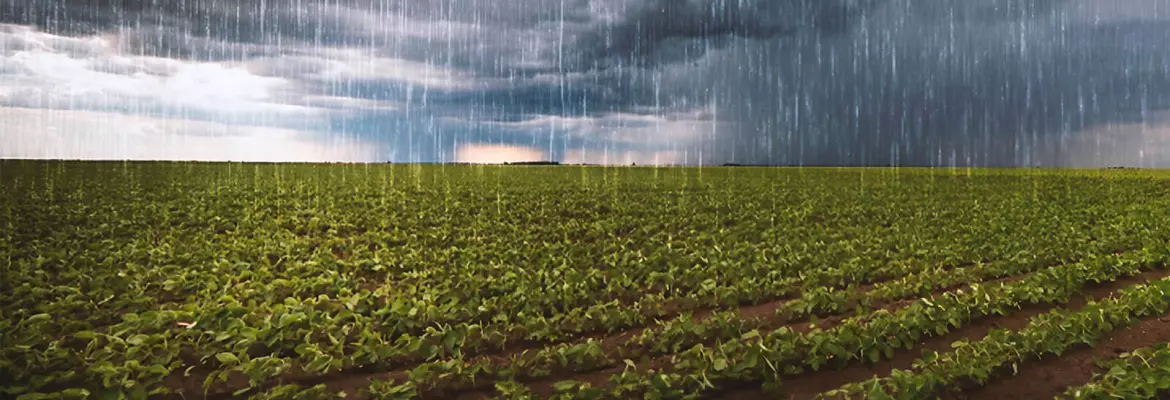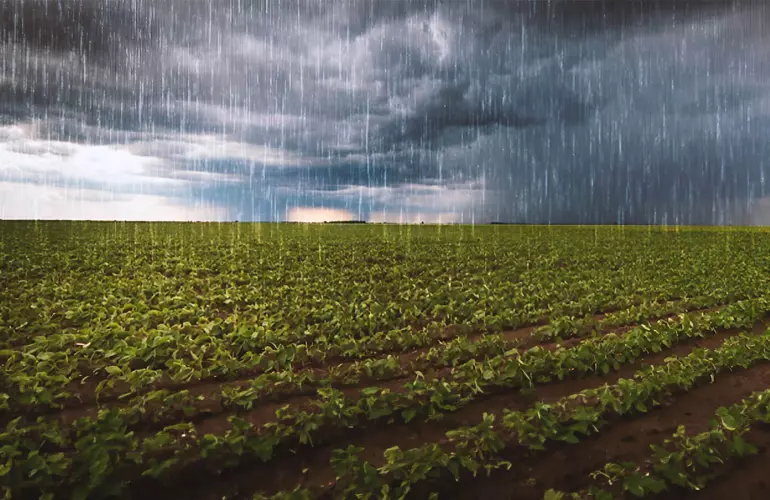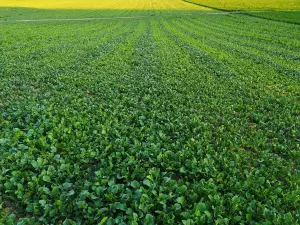
The aim of planting nitrate-fixing intermediate crops between two crops is to trap nitrogen in the form of nitrates so that it does not pollute surface water and ground water during the winter. One crop can be planted or a mix (e.g., grasses / legumes). A good nitrate-fixing intermediate crop also provides other agronomic advantages for a farm.
Less nitrate leaching compared to bare soil
After harvest, mineral nitrogen in the soil infiltrates the deep layers of the soil due to leaching. Nitrogen is present in the form of nitrates, an ion that is highly soluble in water and the most readily absorbed by plants. To prevent it percolating to the deep layers and causing pollution, intermediate crops can be planted. They are seeded after harvest, and grow by absorbing the available mineral fertiliser in the soil. Scientific literature on the subject is unequivocal: nitrate content in drainage water from plots with nitrate-fixing intermediate crops is generally reduced by more than 50% in relation to fields with bare soil, and by more than 75% in rainy conditions.
Nitrates are soluble ions that infiltrate the deeper layers of the soil."leaching is a misnomer: it is the deep removal of non-soluble elements. Nitrates are soluble ions, we will now talk more about leaching

Nitrogen-fixing intermediate crops, a nitrogen reserve
Crop residues left on the field, which are sometimes shredded, return a certain amount of nitrogen to the soil. This can greatly reduce the need to add mineral fertilisers, which means economic benefits with the next crop. This is known as the “green manure” effect. However, nitrogen-return-to-the-soil depends on certain species (especially if legumes are in the mix) and their C/N ratio. If it is too high, it can even cause nitrogen starvation, i.e., nitrogen in the soil is needed to decompose woody residues.

Improving soil structure with intermediate crops
Planting winter cover crops has a positive effect on the structure of the soil. It protects against slaking and reduces erosion. The root development of nitrate-fixing intermediate crops enhances the soil’s bearing capacity. When the cover crop is destroyed, the organic matter enriches the soil with humus and improves biological activity.
Increased biodiversity in terms of the microfauna, macrofauna, insects, and wildlife is one of the positive consequences of planting nitrate-fixing intermediate crops.
Nitrate-fixing intermediate crops: a rotation effect on crop protection
By alternating plant families in the rotation, such as nitrate-fixing intermediate crops, and choosing different cash crop families from one season to the next, it is possible to combat pests. Mustard (crucifer) works well against nematodes. Phacelia (hydrophyllaceae) is also a good option as it does not belong to the same family as any of the cash crops.
Sow a nitrate-fixing intermediate crop to keep weeds under control
As with pests, planting cover crops that are different from cash crops can limit the development of certain weeds. Nitrate-fixing intermediate crops can reduce regrowth and weeds by competing with them.
Nitrate-fixing intermediate crops can also be used as catch crops to provide additional forage for the herd.
